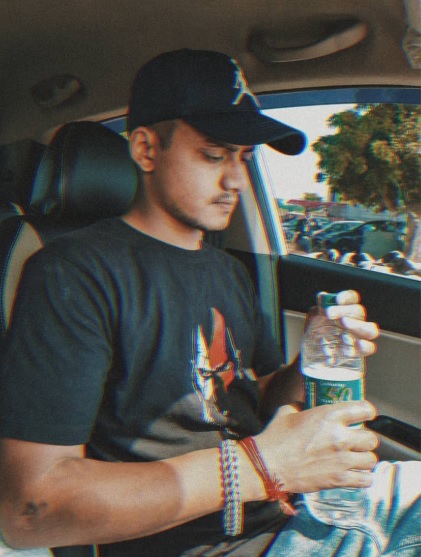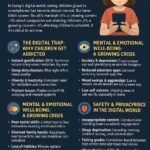
In a world where children are increasingly glued to screens, Australia just made a bold decision that could ripple across the globe.
Australia’s Landmark Ban on YouTube for Children Under 16
In a sweeping reform of digital safety laws, Australia has announced a ban on YouTube accounts for children under 16, set to take effect on December 10, 2025. The move follows a series of alarming reports from the eSafety Commissioner, combined with public concern over the rising exposure of children to harmful online content.
According to a government-backed survey, 37% of children aged 10–15 encountered inappropriate or harmful content on YouTube — the highest among all platforms, outpacing TikTok, Instagram, and X (formerly Twitter). This decision reverses the earlier perception of YouTube as a classroom-friendly, educational platform and positions Australia at the forefront of child-centered digital reform.
🧠 Why YouTube? Once a Classroom Ally, Now a Risk Zone
YouTube was once heralded as a rich source of educational videos, DIY tutorials, and creative exploration. However, its algorithm-driven content recommendations have increasingly come under scrutiny.
A 2023 study by Harvard T.H. Chan School of Public Health highlighted that excessive screen time, especially on platforms like YouTube, can impair cognitive development, reduce attention span, and even trigger symptoms of anxiety and depression in children.
Worse still, filters like YouTube Kids have failed to prevent exposure to:
- Violent animations
- Conspiracy theories
- Self-harm and body image content
- Unverified health advice and “miracle cures”
Mental health experts have long warned that platforms like YouTube can contribute to feelings of inadequacy, FOMO (fear of missing out), and declining self-esteem among children.
“Unregulated content exposure on video-sharing platforms often influences children’s mental health far more than parents realize,” note several psychologists and child development specialists.
🛡️ What the Ban Actually Means: Restrictions, Not Blackout
The move isn’t a complete shutdown of YouTube access for minors. Children under 16 will still be able to:
- Watch public YouTube videos without logging in
- View embedded videos on educational websites or blogs
But they will lose access to:
- YouTube account creation
- Subscriptions and personalized feeds
- Commenting, uploading, or playlist management
- Participation in livestream chats
Platforms that fail to enforce age restrictions through robust verification systems will face penalties up to A$49.5 million under the Online Safety Act 2021.
📊 What Prompted This Bold Step?
Australia’s crackdown isn’t a knee-jerk reaction. It follows months of analysis by the eSafety Commissioner, including:
- Spike in cyberbullying reports among children aged 10–15
- Increase in self-harm content and body dysmorphia triggers
- Weak results from YouTube Kids filter audits
- Proliferation of harmful challenges like the “Choking Game” or fake science hacks
Parental complaints have also surged. A 2024 eSafety Australia report documented a 46% increase in parent-reported incidents involving YouTube in just one year.
🌍 Global Echoes: Could Other Countries Follow?
The world is watching.
- Canada has proposed similar reforms in its Child Online Safety Bill
- The UK’s Online Safety Act already restricts harmful content, and a YouTube-specific clause is under debate
- Germany and New Zealand are conducting reviews of algorithmic targeting of minors
- In the US, debates around COPPA (Children’s Online Privacy Protection Act) are heating up again
According to the World Health Organization (WHO), children aged 5–17 should not exceed two hours of recreational screen time per day — a guideline ignored by millions.
In fact, UNICEF and Human Rights Watch have both called for global frameworks to make digital spaces safe, inclusive, and age-appropriate by design.
💬 Big Tech Responds: Privacy vs. Protection
Google, YouTube’s parent company, has responded cautiously:
“We’re reviewing the legislation and remain committed to youth safety online. However, age verification must balance protection with privacy.”
Digital privacy groups like the Electronic Frontier Foundation (EFF) argue that:
“Mandatory biometric or ID-based verification may lead to overreach, surveillance, and risks of data abuse.”
This brings the debate into murky territory: Can tech companies protect kids without compromising digital rights?
👨👩👧 What Australian Parents Should Do Next
This ban is not just policy — it’s a call to action for parents and schools. Here’s what families in Australia should consider:
- ✅ Start conversations early about screen boundaries
- ✅ Migrate to ad-free, child-safe learning platforms like ABC Education or Khan Academy
- ✅ Use family media contracts to manage device usage
- ✅ Encourage offline hobbies like journaling, sports, or creative arts
- ✅ Reassess schools’ reliance on YouTube as a teaching tool
⚖️ Finding the Balance: Censorship or Care?
Many child psychologists and digital well-being experts agree that excessive exposure to platforms like YouTube can negatively impact children’s self-image and emotional development.
They emphasize that algorithm-driven content often promotes unrealistic lifestyles, contributing to anxiety, low self-esteem, and a distorted sense of reality among young users.
🔚 Final Thoughts: A Turning Point in Global Digital Policy
Australia’s bold move represents a watershed moment in child internet regulation. With so much of childhood now shaped online, the question is no longer whether to regulate — but how and how fast.
While the decision faces hurdles in enforcement and potential backlash from tech giants, it may set a precedent for other democracies to follow. In a digital age flooded with noise, Australia has made one message clear:
👉 Protecting kids online is no longer optional.
✅ Suggested Reading
- UNICEF: Growing Up Online – Youth & Digital Safety
- Harvard Public Health Study on Screen Time & Child Health
- Australia’s Online Safety Act 2021
You Might Also Like
- Staying Safe Online in 2025
- Perfect match: emphasises healthy screen breaks and mindful consumption, aligns well with child digital protection theme.

Sandeep Jadhav is a self-taught sustainability writer and the founder of Pulsewire.in. He shares insights on upcycled product manufacturing, green entrepreneurship, and eco-friendly business models. Though not formally certified, his work is backed by deep research and a strong passion for promoting climate-positive innovation.









